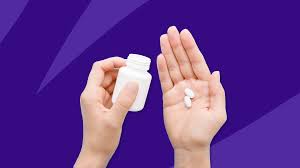Event-free survival (EFS) is an important endpoint in many types of clinical trials to assess whether treatments are beneficial, especially oncology and cardiovascular studies. The time from when treatment starts until a certain event (ie, disease progression or relapse), specified prior to study initiation, is defined as the EFS. EFS, unlike OS (which just measures the duration of life before death) looks at other events which commonly signify deterioration in a patient e.g. A 2021 study in The Lancet Oncology showed that treatment-based endpoints such as EFS can reduce clinical trial time by up to 25% thus enabling quicker determination of therapeutic benefit.
Some of the primary industry terms — hazard ratio, progression-free survival and relapse — are critical to addressing how EFS functions in clinical trials. The example of hazard ratio measures the risk that events could happen within treatment group as opposed to control, which makes a cut and dry interpretation about efficacy for drugs. The metric that EFS encompasses a factor right from initiation of treatment down to patient specificity endows it with such robustness as an endpoint.
One prominent case is the deployment of EFS in clinical trials testing chimeric antigen receptor (CAR) T-cell therapies for some leukemia and lymphoma indications. In these trials, EFS is an important endpoint because it describes the period from starting treatment until a patient either relapses or experiences intolerable toxicity — thereby importantly informing on not only the long-term response to therapy but also its tolerability. In a trial for CAR T-cell therapy, published in The New England Journal of Medicine; patients receiving the investigational treatment had an event-free survival median: 16.5 months compared to existing treatments.
EFS also provides a lot of value when it comes clinical trial efficiency. OS as a traditional endpoint can be years away, particularly in diseases with high survival rates. With EFS, trial readouts can come earlier to support the decision-making process in drug development. For example, in adjuvant cancer therapy trials they estimated that using EFS instead of OS can save 30% cost per trial based on data from an analysis by McKinsey & Company in year 2020. Pharmaceutical companies need to reduce costs if they hope to get drugs through their research pipeline any more quickly.

Event-free survival adds texture to our understanding of disease control, particularly helpful in diseases where a potential long overall duration may hide early treatment failures,” said leading hematologist John C. Byrd, MD. This underscores reasons to prefer EFS when early treatment failure is a concern, as it allows consideration of both immediate and long-term outcomes.
As good as EFS is at being an endpoint there are some limitations. This is largely dependent on how events are defined in the trial protocol, and these varied definitions can be very different across studies. For instance, one trial may look at disease progression as an event while another might count on serious toxicity or further therapy. The variability in this endpoint can pose problems for cross-trial comparisons, yet the increasing adoption of it is resulting a more consistent definition.
Resources such as event free survival offer a wide range of information on what this metric means, how it is used and the associated implications for clinical research results compared with other measures.
CONCLUSIONS: This review outlines that event-free survival is a flexible endpoint and one even coming into vogue in clinical trials. In doing so, EFS provides a more comprehensive overview of the efficacy and safety profile in capturing multiple clinically meaningful events. The innovative use of RWE can deliver faster results at lower trial costs, making it an important building block for drug development — and especially crucial in high-stakes therapeutic areas like oncology. Given the ongoing evolution of research, EFS will presumably continue to be a cornerstone metric for assessing treatment effectiveness.
